Bicycling sciatica is a condition that may be recognizable to regular bike riders, motorcyclists, and elite cycling athletes.
Sciatica affects bikers in particular and can have physical and psychological causes.
For a symptomatic profile, it will frequently involve a bit of both.
If you don’t address it, your muscles, particularly your legs, may become permanently weak.
Here’s more information on the sciatica problem, some methods for relieving pain, and to find the solution ‘Is bike riding good for sciatica pain?’
Table of Contents
What Exactly is Sciatica Pain?
Sciatica is defined as pain or feeling along your sciatic nerve.
The sciatic nerve is made up of nerve roots from the lumbar and sacral spines and runs down each leg from your hips to your buttocks.
Sciatica can also be due to compression, inflammation, or irritation in the sciatic nerve.
Sciatica symptoms include shooting or scorching pain, tiredness, numbness, or tingling.
Although sciatica pain can cause agonization, many issues resolve within a few weeks of treatment.
Patients with severe sciatica pain, who also have alterations in bowel or bladder function, may require surgery.
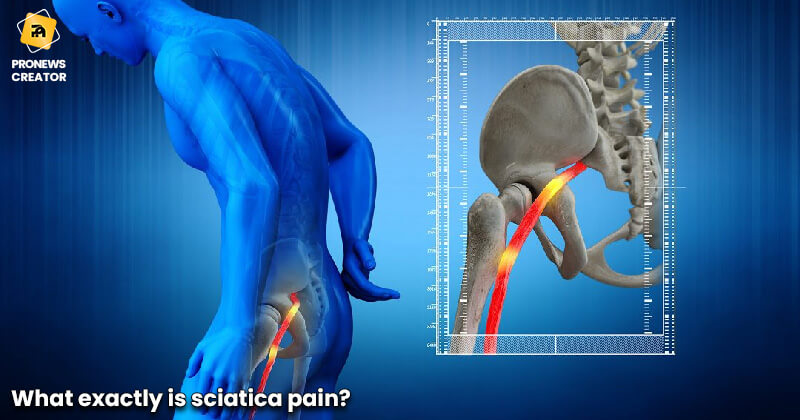
The Connection Between Sciatica Pain and Bike Riding
Bike riding requires extended periods of sitting, and seated sciatica pain is one of the most prevalent clinical manifestations of affected patients.
Sitting on a hard bicycle seat puts pressure on the buttocks, coccyx, and sciatic nerve, especially in people with aberrant pelvic posture.
Long durations of sitting can leave anyone painful and stiff, but when combined with the continuous motion of the legs and the thoracic position needed in cycling, the pain can be severe.
Meanwhile, as you ride, the psychological components of sciatica pain constantly enter your mind.
Long bike rides offer you time to ponder, which might lead to defensive reactions to any sensitive psycho-emotional concerns that threaten to enter your thoughts.
Furthermore, professional cyclists put a lot of pressure on themselves, and perfectionist tendencies have links to causes of mind-body back discomfort.
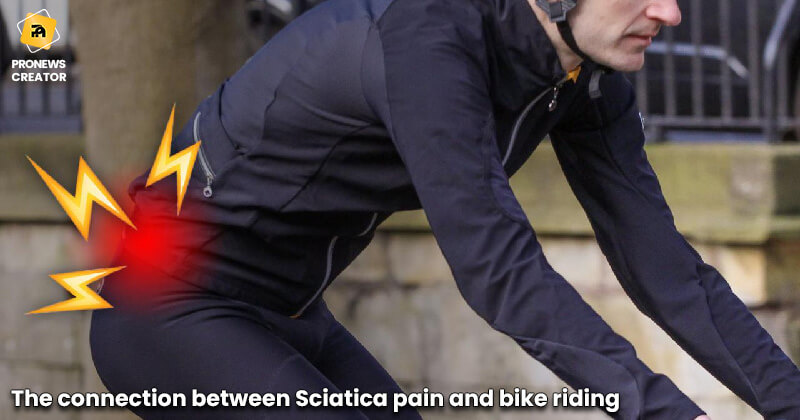
Is Bike Riding Good for Sciatica Disease?
No. When you ride your bike with a firm seat, you may strain your spine and sciatic nerve when you’re riding. Riding with a bent back or leaning forward might aggravate sciatica if your seat and handlebars are not adjusted.
Bike riding, especially on a rigid bike seat, can strain your spine and sciatic nerve.
Riding slumped or forward-leaning can worsen Sciatica pain if your seat and handlebars are misaligned.
Cycling can help with Sciatica symptoms if done gradually and by your doctor’s recommendations.
Physicians frequently suggest light exercises and stretches involving the legs increase intensity as a treatment to resolve Sciatica pain more quickly and lessen the chance of future episodes.
However, as we will see, there are specific circumstances where riding can aggravate or even induce Sciatica symptoms.

Does Biking Help to Relieve Sciatica Pain or Not?
Sciatica is a painful condition caused by a pinched nerve in the lower back, which causes pain to radiate down the leg. Biking can be a low-impact exercise that can aid persons with sciatica pain.
Cycling can help you stand up straighter and keep your spine in the proper position, relieving strain on the sciatic nerve. Cycling can also increase blood flow and endorphin production, which can help to relieve pain and oedema.
However, remember that not everyone with sciatica pain can ride a bike. If the pain is severe or is due to other symptoms, you should consult a doctor before exercising.
Proper form and design are critical and can lead to additional injuries or exacerbate current ones.
You may require other therapies, including stretching and strengthening exercises and physical therapy. Cycling can help some people with sciatica pain, but you may use it in conjunction with other treatments and under the guidance of a doctor.

Bicycling Sciatica Treatment
Stopping a favourite hobby is seldom a suitable long-term answer.
It is preferable to focus on obtaining a precise diagnosis and determining the source of the pain to alleviate it.
It is common practice to suspect a structural cause, and persistent sciatica pain is commonly misdiagnosed.
The ideal strategy is to participate in your care, researching potential treatments.
Sciatica has a reputation, but it is not insurmountable.
The main aim is to obtain an accurate diagnosis, which leads to an appropriate treatment plan. Be wary of cycling sciatica explanations that don’t make sense to you.
You must consider mental and physical options and ensure that any structural difficulties indicated are evaluated.
It will allow you to determine whether your riding is genuinely exacerbating them.

Tips for Reducing Sciatica Pain
Here are some suggestions for reducing Sciatica pain when biking and solutions to find ‘Is bike riding good for Sciatica?’
1. Stretch while riding your bike
Stretching relieves sciatic nerve compression and relaxes the piriformis muscle group. In addition to alleviating pain, this will help you retain spinal flexibility and avoid future spells of sciatica pain.
If you have sciatica pain, you can attempt a variety of stretches. Examples include back extensions, standing hamstring curls, and knee-to-chest.
You should stop while stretching is healthy if you are in extreme discomfort. Your body is telling you that these stretches are too hard.
Ignoring them risks causing irreversible nerve or muscle damage.
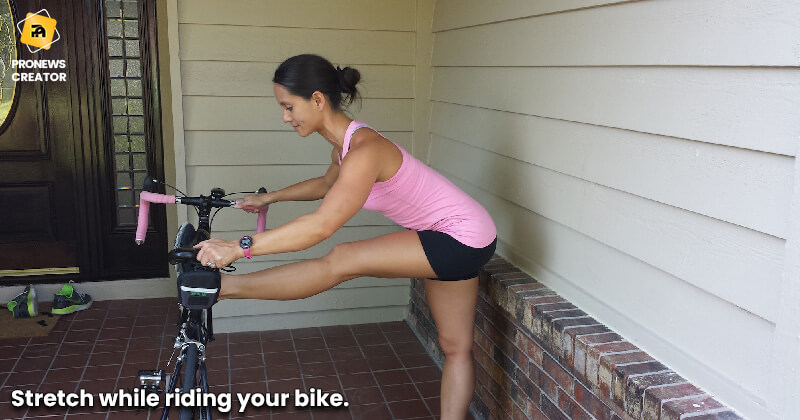
2. Make Use of Relaxing Seating
Sitting on something hard can aggravate the pain in your sciatic nerve.
You can consider purchasing new bike seats to prevent this from happening.
You can regard a few factors when shopping for the ideal saddle.
The first is how it appears. The various saddle shapes ensure that cyclists are comfortable. If you have more choices for assistance when riding, it may be beneficial.
You must also ensure that the seats are at the proper height. If it isn’t, pedalling will be difficult and will put a strain on your lower back.
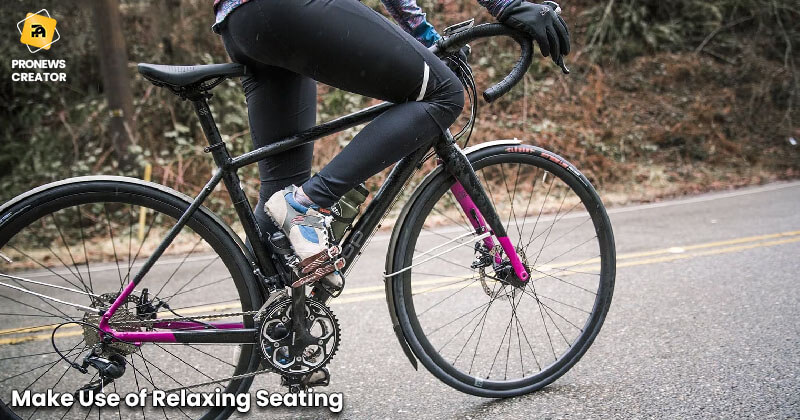
3. Take frequent short breaks
When you face sciatica pain, resting is sometimes the best thing to do. Take some time off from cycling, no matter how difficult it is.
It will allow your body to repair and regenerate fresh energy. You may discover that after rest, you have more energy to cycle.

4. Use a Heating Pad
Although stretching appears to aggravate the problem, this is not the case.
Stretching releases pressure on the sciatic nerve and relaxes the piriformis muscle group. You can apply a heating pad to avoid future spells of sciatica in addition to relieving pain.
Even while stretching is beneficial, you should stop if you are in extreme pain. Your body is warning you that these stretches are too strenuous. If you ignore them, you risk causing irreversible nerve or muscle damage.

5. Seek Chiropractic Care
Chiropractors can assist with sciatica pain in a variety of ways. One method is to make numerous modifications.
They will examine your spine for misalignments, such as a herniated disc, which could be the reason for your pain.
After a thorough examination, they will apply pressure on the affected area. They could take a more diverse approach as a viable line of action.
They will apply sharp and fast pressure to the ailment. It will aid in realignment and maybe restore some range of motion.

6. Consume Magnesium-Rich Food
Magnesium is an essential ingredient to help with nerve discomfort.
It is unclear how magnesium relaxes nervous nerves and muscles, but you can do so by decreasing inflammation.

Recumbent Bike for Sciatica
A recumbent bike is a sort of stationary cycle with a backrest and seat that can relieve persons suffering from back or sciatica pain.
Leaning back relieves strain on your lower back, which can help ease the pain.
However, you should consult a doctor before using a recumbent bike, especially if the discomfort is severe or accompanied by other symptoms.
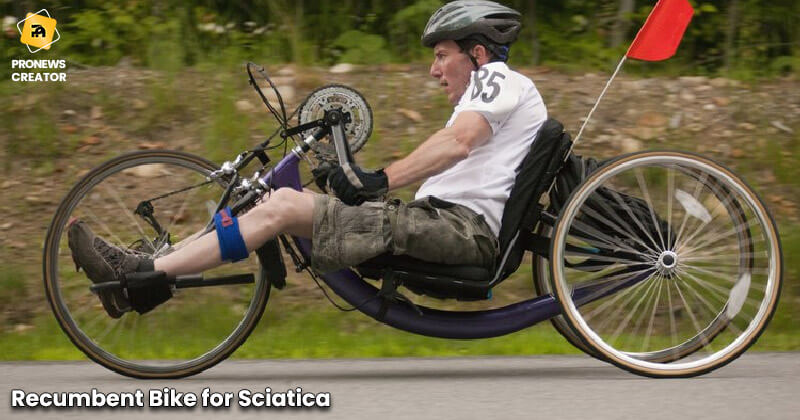
The Advantages and Disadvantages of a Recumbent Bike for Sciatica
We’ll go through the benefits and drawbacks of a recumbent bike, and why it can aid with sciatica pain treatment.
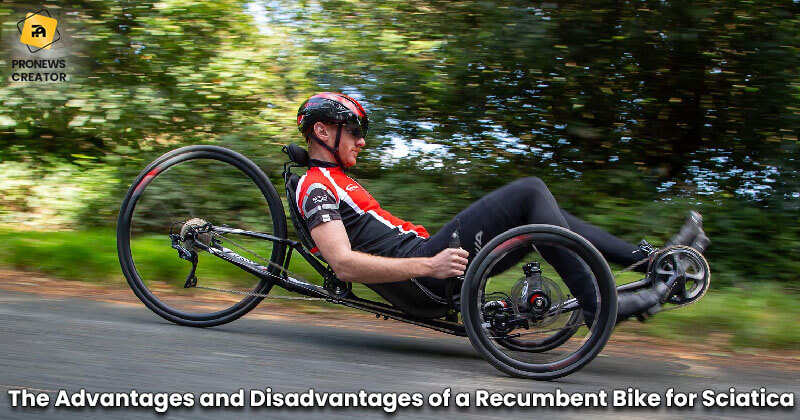
Advantages
Here are the uses of a Recumbent Bike for Sciatica.
Relaxed Positioning
The reclining position and backrest support make you feel like you’re lying down rather than sitting, which is far more comfortable for many people with sciatica pain.
A recumbent bike is thus more comfortable and pleasurable, and it helps to alleviate sciatica pain.
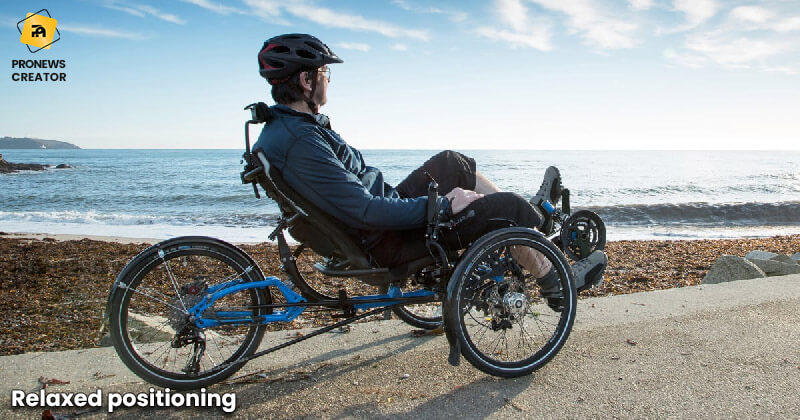
Right pose and lower back alignment
Correct posture and back positioning are critical for preventing sciatic discomfort from increasing.
The recumbent bike’s backrest reduces the demand to bend forward, putting very little strain on the lower back and helping to protect it and ease sciatic pain.
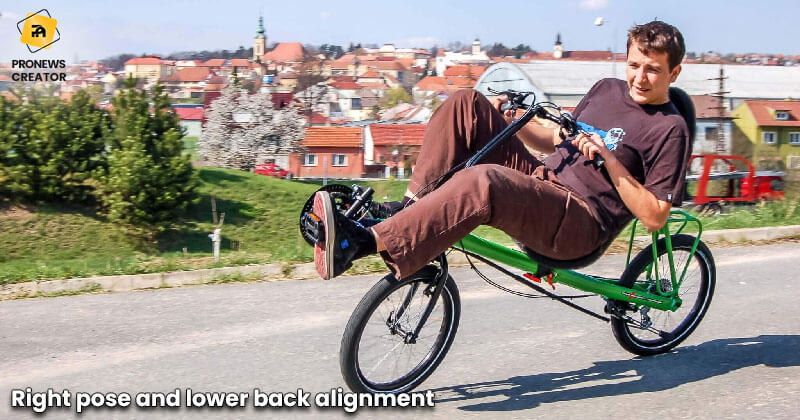
Impact-free, steady, and secure
A recumbent bicycle provides stability, low impact, and balance. It makes this bike an excellent activity for preventing and alleviating sciatica pain.
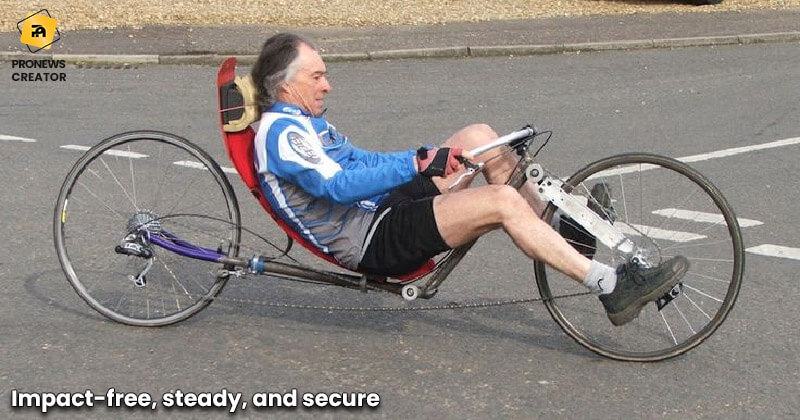
Exercise Can Help Reduce Sciatica Recurrence
Exercise also helps to reduce the likelihood of sciatica recurrence over time.
Recumbent bike cycling is a good kind of cardiovascular activity, making it particularly beneficial for those suffering from severe sciatic pain.

Disadvantages
Here are the harmful effects of a Recumbent Bike for Sciatica.
Minor Weight Loss
Failing weight can aid with sciatica relief. Excess weight can cause your spine to become out of alignment over time, increasing the pressure on it and contributing to sciatic discomfort.
A recumbent bike does not burn many calories per hour, making weight loss with a reclining bike challenging.

Sitting for Long Periods
When you have sciatica pain, sometimes not advisable to sit for an extended period because it places 40% more strain on the spine than standing and can cause excruciating agony.
Unfortunately, a recumbent bike workout consists solely of sitting, albeit in a reclined posture, so using one for extended periods may not be advisable.
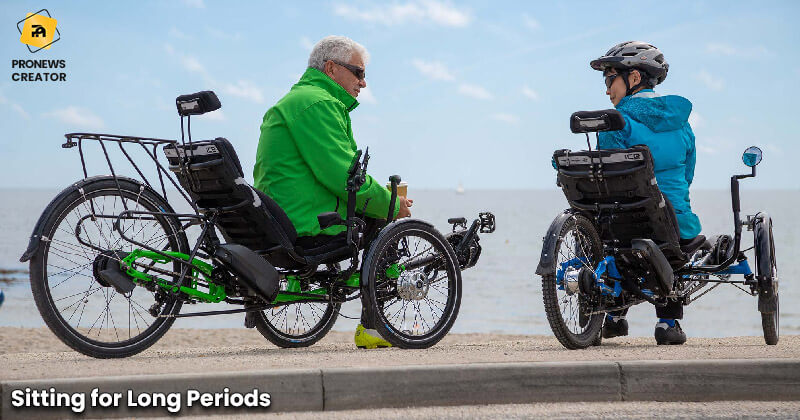
FAQs
Can I Ride My Bike While Suffering from Sciatica Disease?
Sciatica, or any other neural symptoms in the buttocks or legs, is a presentation. We recommended a professional bike fit. Depending on the severity of the symptoms, riding at a low intensity is frequently possible.

Can Biking Induce Sciatic Nerve Pain?
You bike by moving your legs back and forth. Your hips will shift as a result. Cycling can damage the bones and muscles in this area if you overdo it or don’t stretch beforehand. It may ultimately wear down the bones, causing them to press against the sciatic nerve.

What is the Best Sciatica Exercise?
To relieve the discomfort of sciatica pain caused by degenerative disc degeneration, spine experts frequently recommend one or more of four sciatica exercises: pelvic tilt, knee to chest, lower trunk rotations, or all four opposing arm and leg extensions.

When should you see a doctor?
If your sciatic pain is severe or lasts over a few weeks, consult a doctor or physical therapist.
You can ask your expert Is bike riding good for Sciatica?
They can design a personalized workout program to help you relieve discomfort, gain strength, and improve your body mechanics.

Final words
Sciatica is a frequent though archaic word. It is called ‘radicular pain,’ because nerve root involvement is in your back.
Now we understand the solution to the problem ‘Is bike riding good for Sciatica or not?’
In many circumstances, bicycle sciatica treatment is uncomplicated. It could be as easy as journaling and emotional work or complex as changing your bike seat or modifying your riding technique.
There are numerous advantages to utilizing a recumbent bike for sciatica treatment.
Take it slow and concentrate on activities that will help you strengthen and balance your body while reducing pain.
You should eat healthy, lower your stress, and get a massage to heal this pain quickly.


